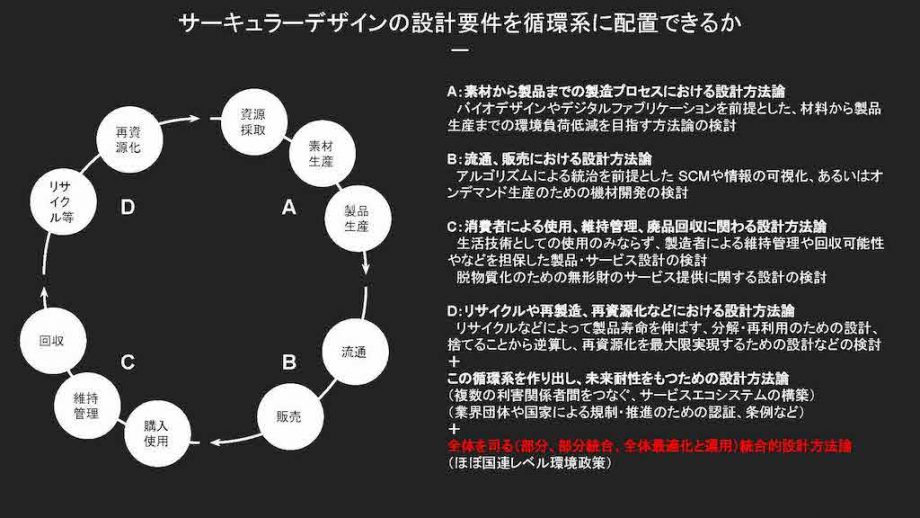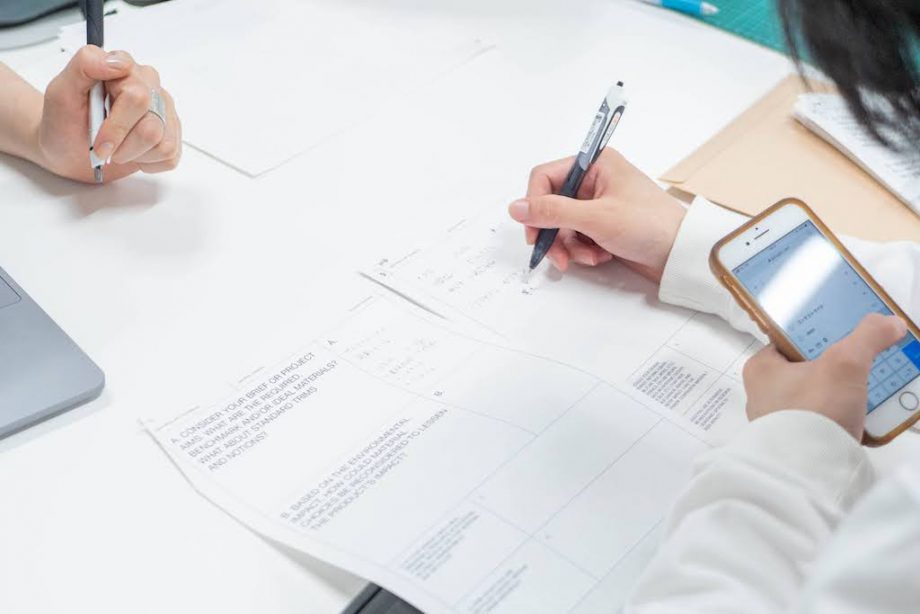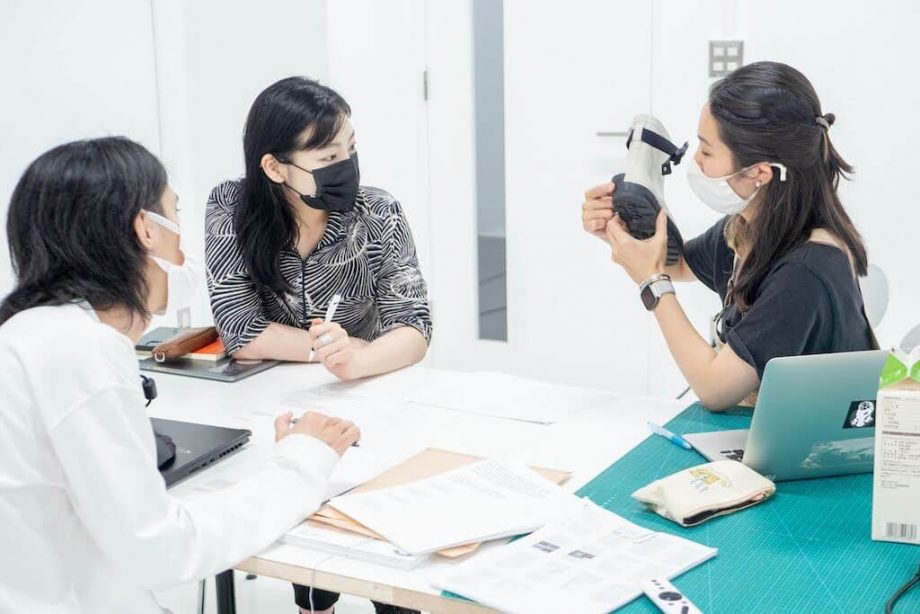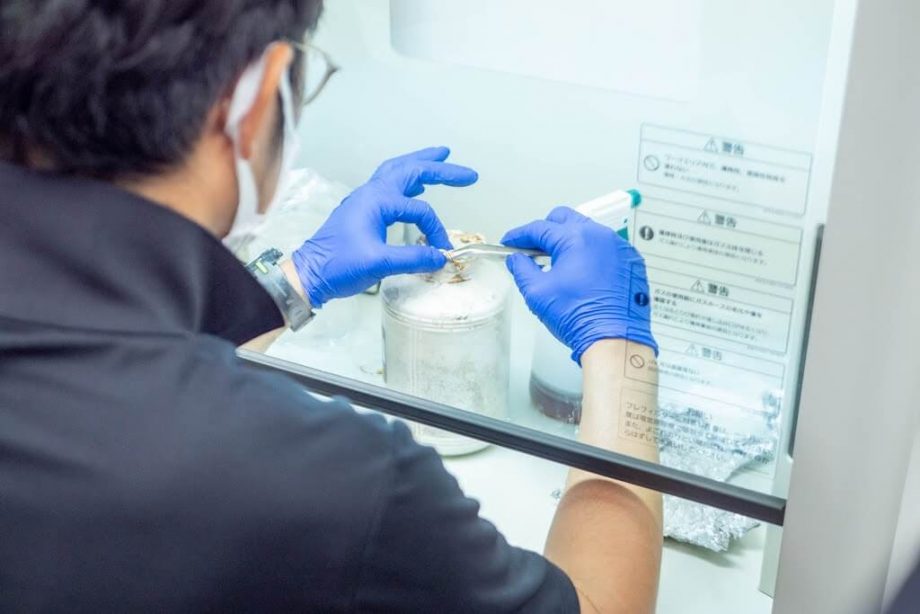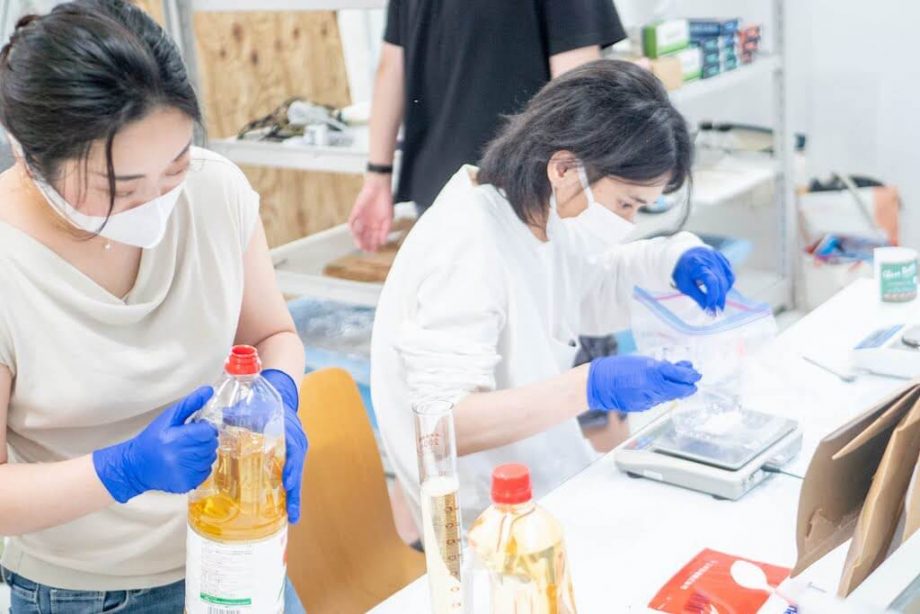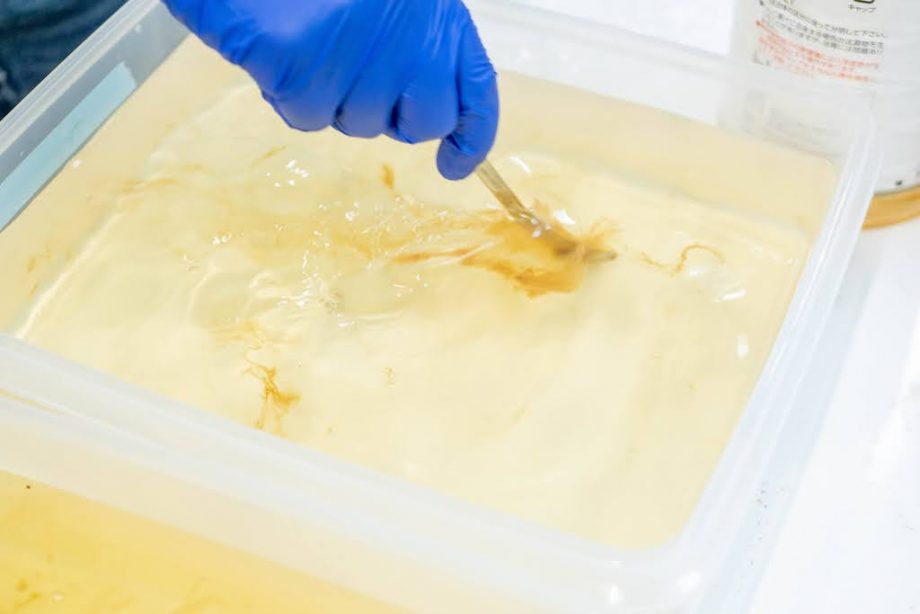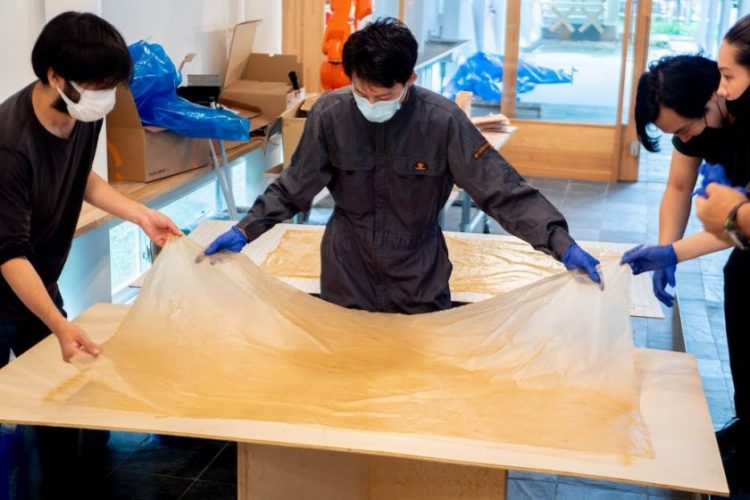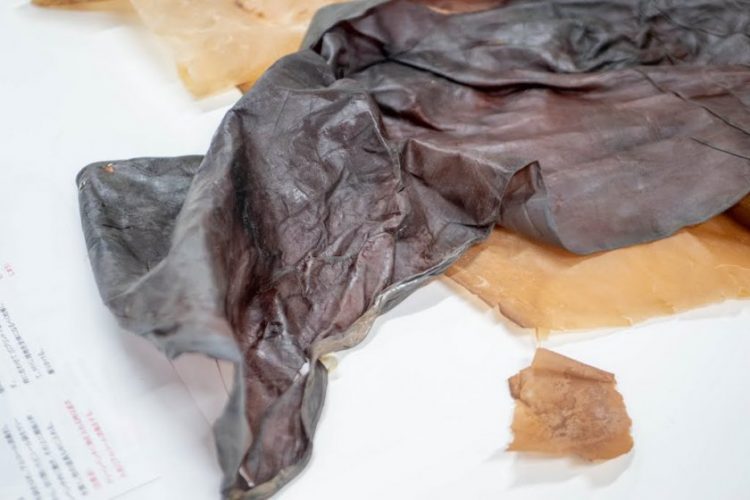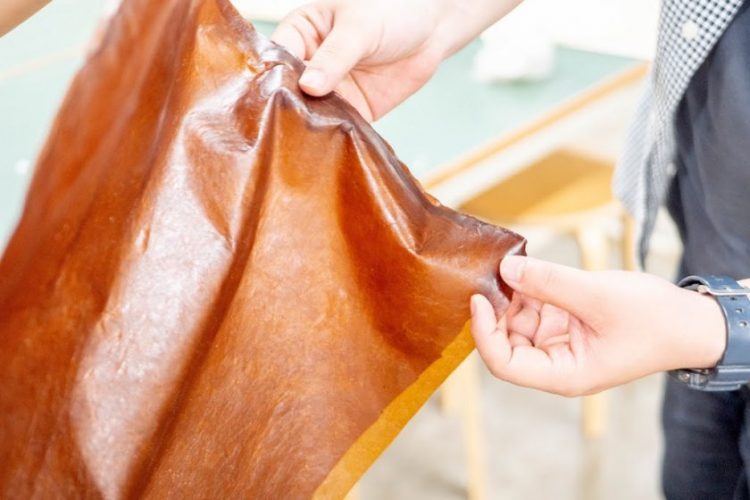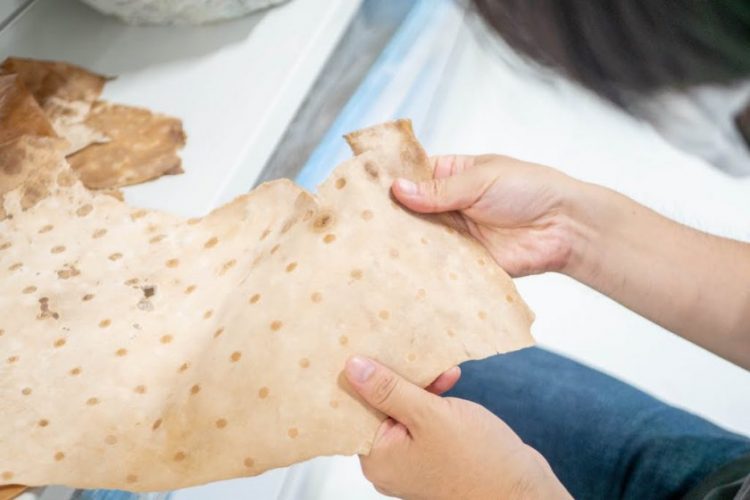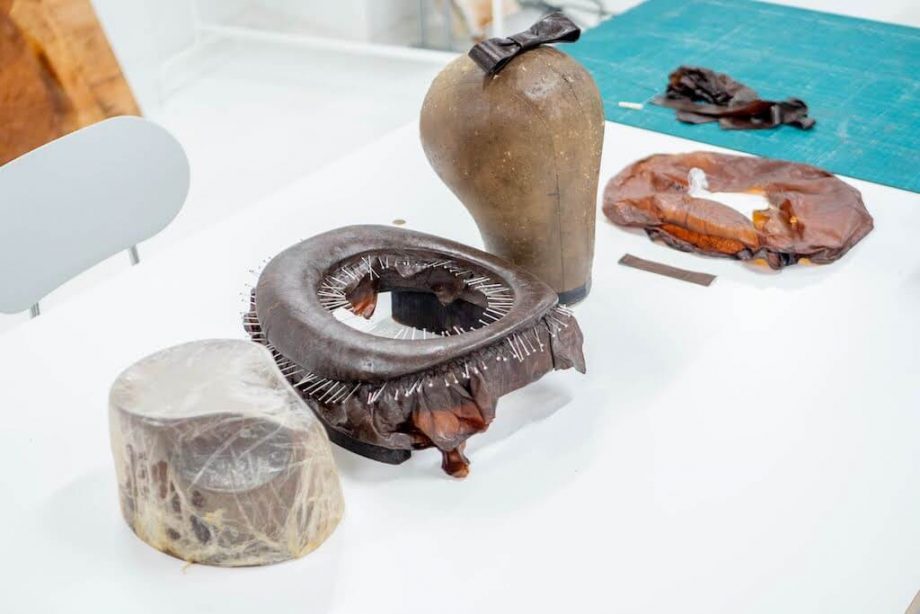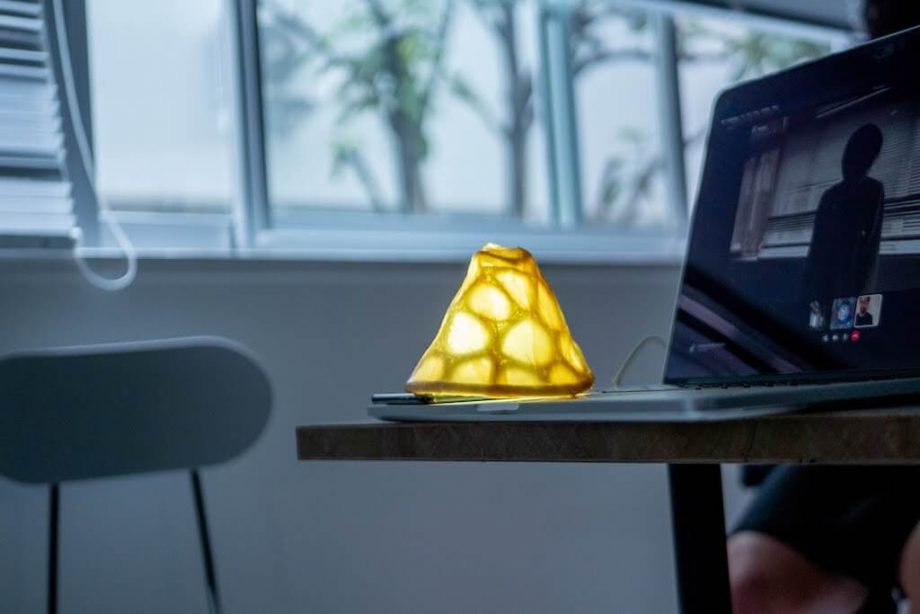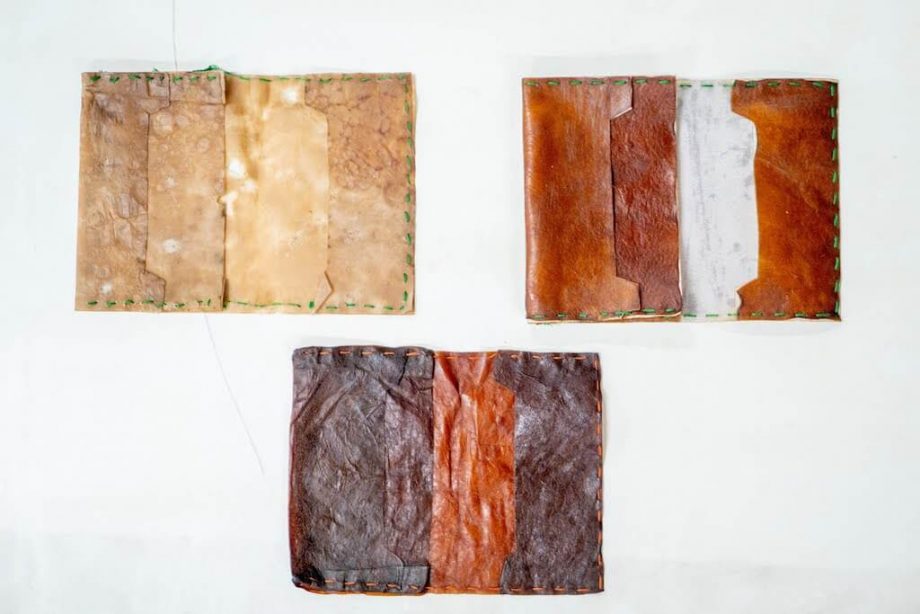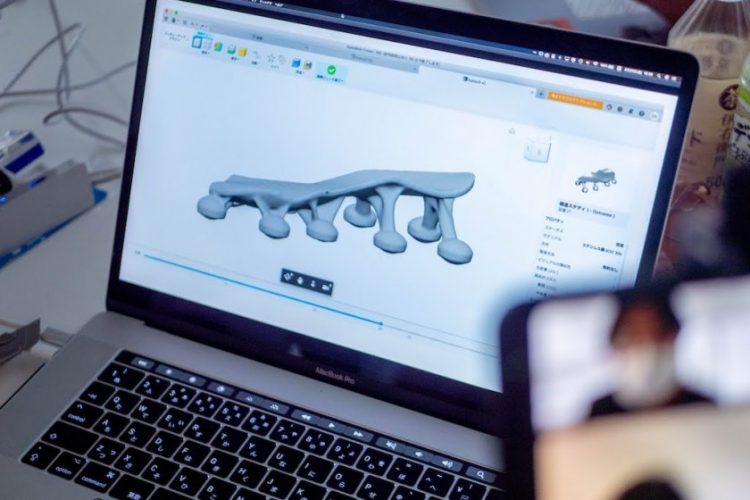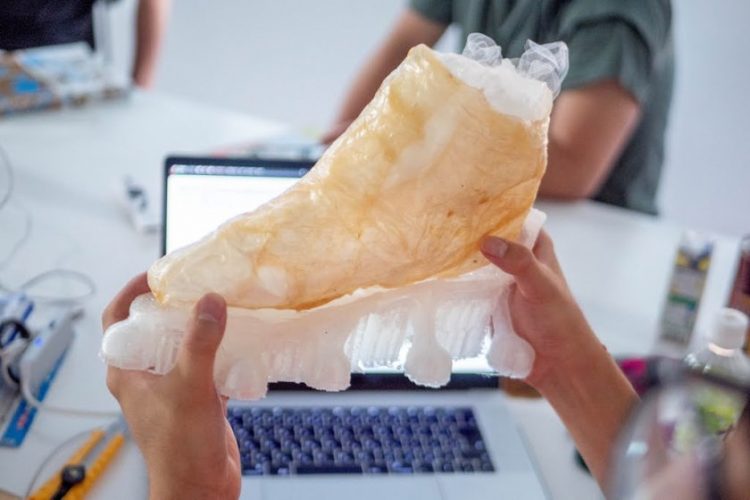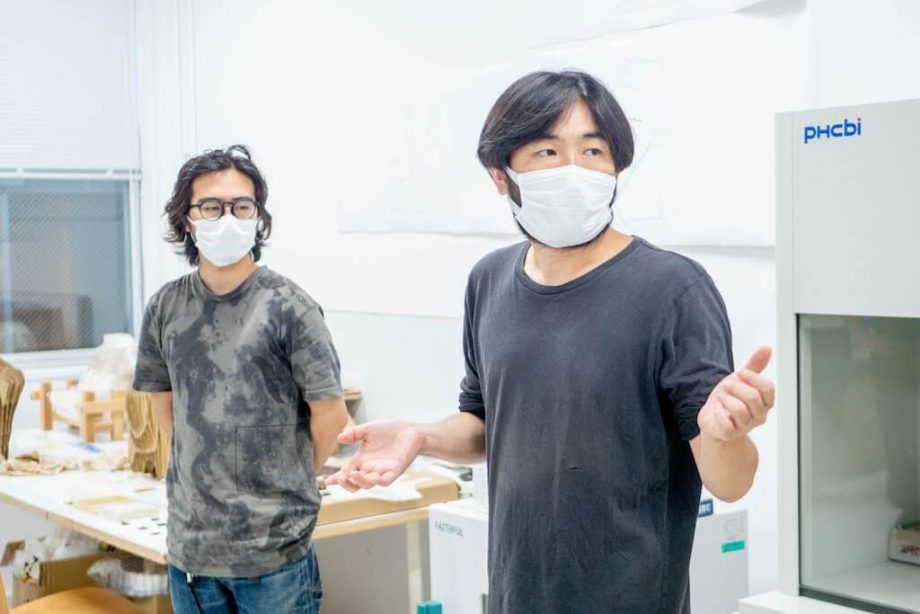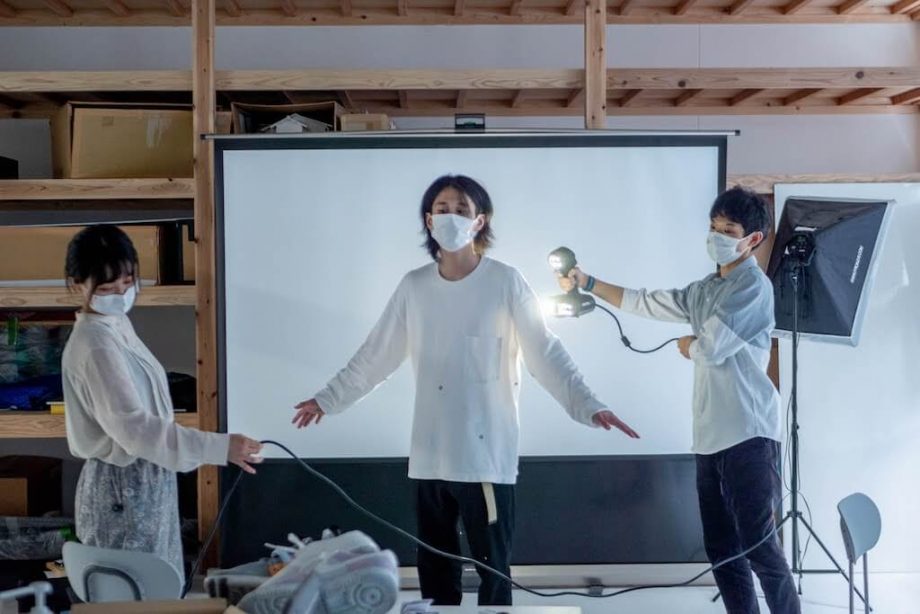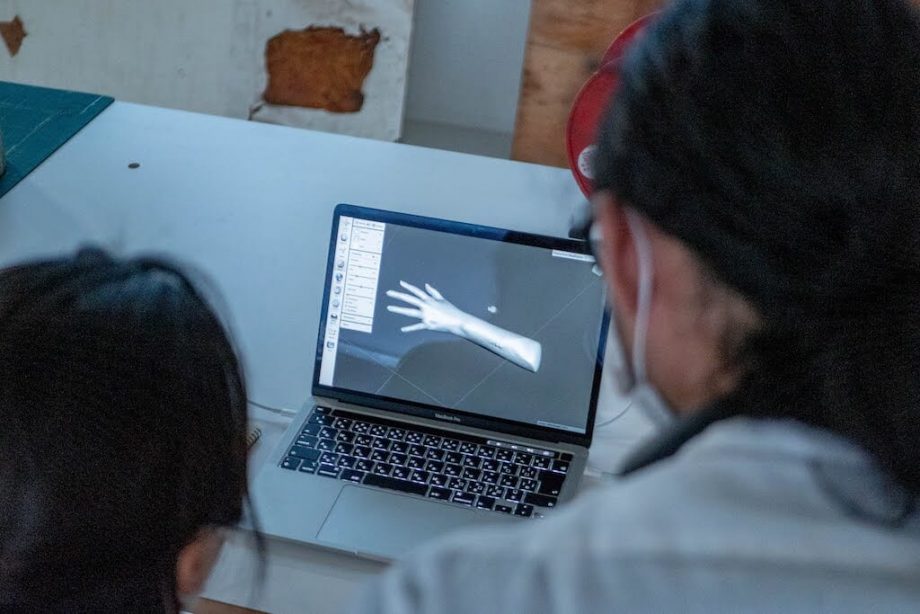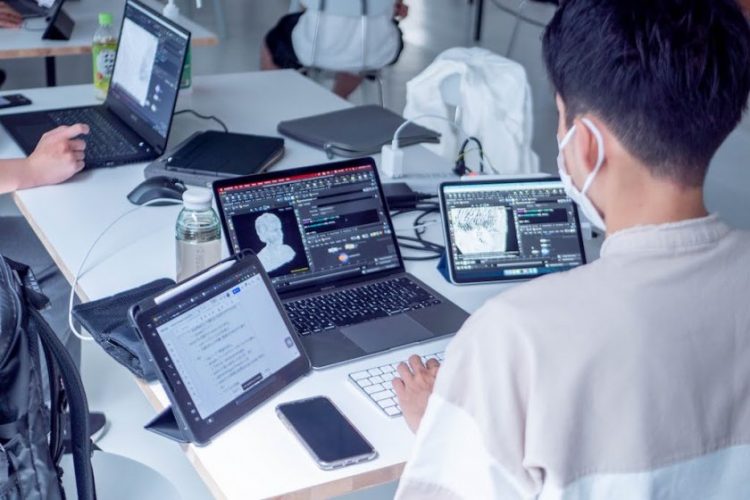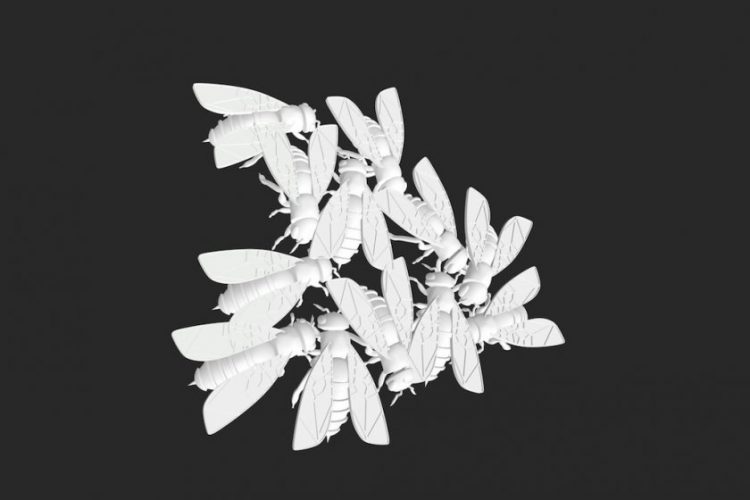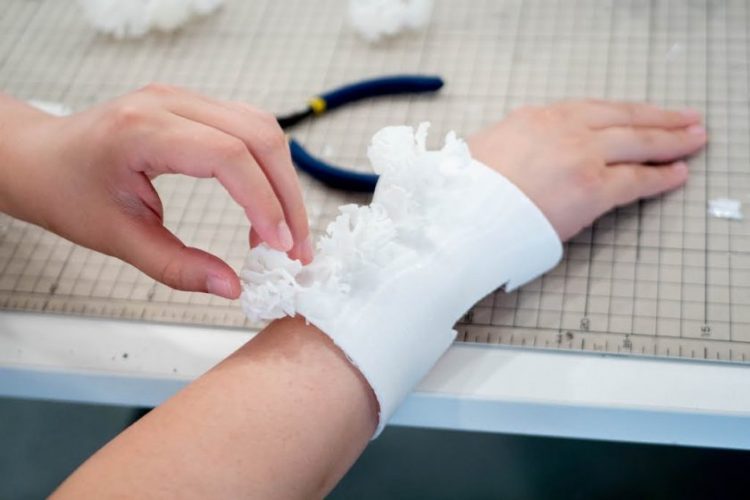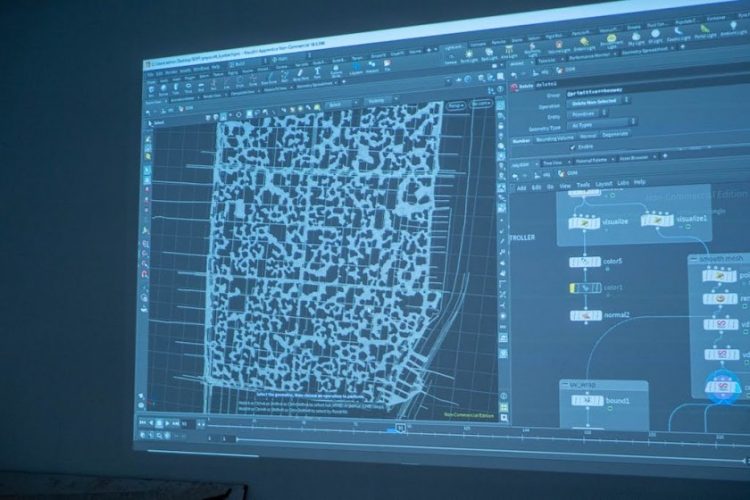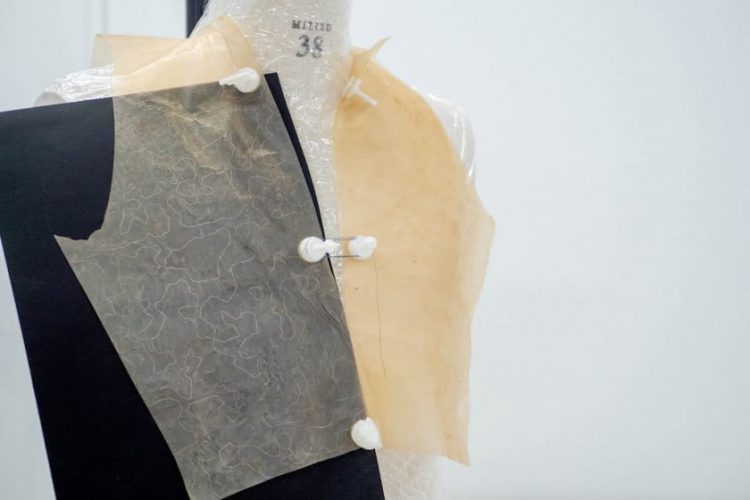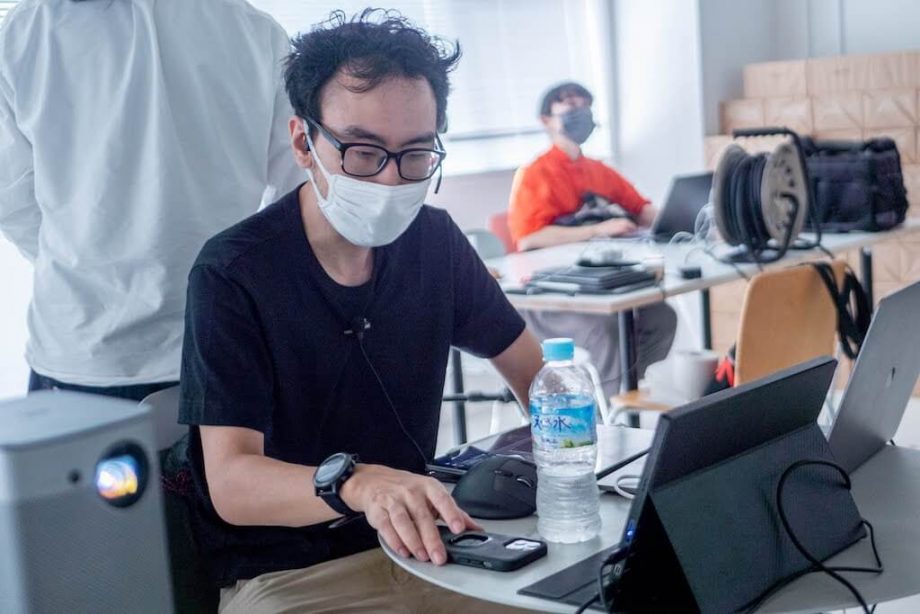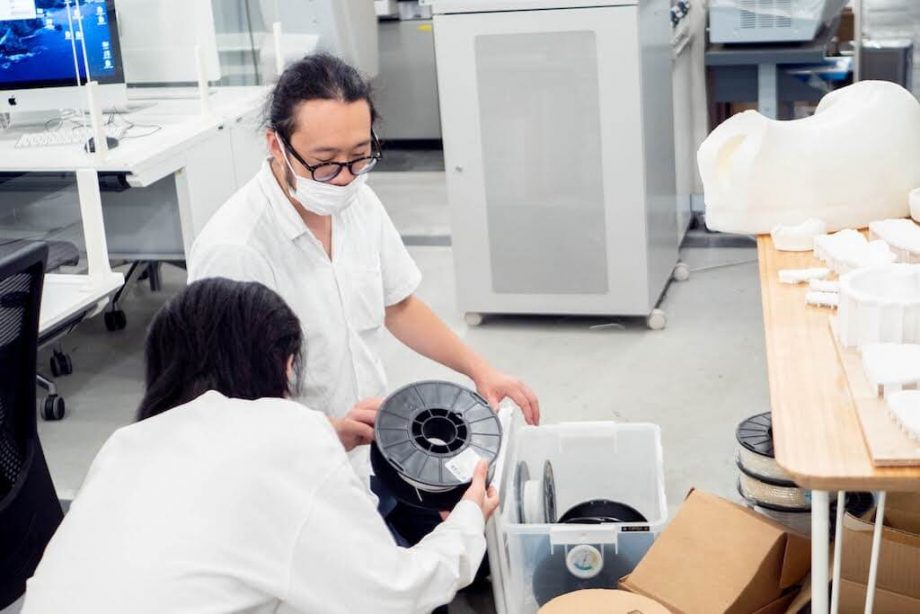Event report
January 25, 2023
Kosuke Kinoshita
Loftwork Inc. / MTRL・FabCafe Kyoto Marketing and Produce
In August 2021, the Kyoto Design Lab [D-lab] held the School of Fashion Futures with the collaboration of FabCafe Kyoto / MTRL KYOTO. Throughout the hands-on program, participants tackled the challenge of designing a sustainable future, specifically in the field of fashion. It was the first of its kind in Japan; a unique 8-day combination of online and offline sessions where students learned about biomaterials, AI design, and circular design. In this event report, we introduce the different topics and exercises presented.
Original text in Japanese: Kosuke Kinoshita, FabCafe MTRL Kyoto.
Translation and editing: Aya Bergkamp & Judit Moreno, FabCafe Tokyo.
What is the true meaning of “circular design”?
At the start of the summer school program, Professor Daijiro Mizuno, from the Keio University Graduate School of Media Design, gave an introductory lecture on circular design. After introducing relevant research and practical examples of products and projects, Professor Mizuno summarized the current situation surrounding the concept. He also presented a perspective on the roles and skill sets that will be required of players in the design field in the future.

▲ Excerpts from the lecture by Professor Mizuno. In order to design the entire product lifecycle and supply chain as a circular system, multiple design methodologies need to be linked and integrated. In addition, the importance of reconsidering value creation factors was also underlined. This impacts all stakeholders and other involved systems, for which appropriate communication becomes key. Since a design can entail not only products but also services and systems, designers are required to possess the knowledge and skills to deal with diverse areas in an interdisciplinary manner.
▲ The participants undertook offline group work where they prototyped circular product designs using familiar products.
Program participants took part in an offline workshop guided by student members of the Kyoto DesignLab. The session’s theme was “How to make bio-leather derived from mushrooms and microorganisms”. In the first half of the session, participants experimented with cultivating SCOBY (symbiotic culture of bacteria and yeast) leather and mushroom leather. These biomaterials have been attracting attention in recent years as more sustainable alternatives for leather. By the end of the workshop, participants had created prototypes of product ideas using the harvested SCOBYs.
▲ SCOBY is a symbiosis of bacteria and yeast also known as “black tea mushroom” or “kombucha.” The sheet-like material produced during the fermentation process can be dried to create a material with a leather-like texture.
▲ Harvesting SCOBY. Immediately after harvesting, SCOBY contains a lot of water and needs to be washed and dried. Its color and texture can be changed by tweaking the drying process and environmental conditions.
▲ Prototypes of product ideas using SCOBY. While experimenting with the characteristics of the materials, the aim was to explore approaches not only in terms of design and functionality, but also from a critical perspective towards the general implementation of a circular economy in society.
▲ The bioleather exercise was based on Kazutoshi Tsuda’s [left image] research at the Kyoto Design Lab and was conducted with guest lecturer Kazuya Kawasaki (CEO, Synflux Corporation, Speculative Fashion Designer & Design Researcher) [right image].
The second half of the School of Fashion Futures program focused on exercises in Houdini, a software that enables procedural 3DCG modeling and simulation of the body. The introduction and utilization of algorithmic data creation methods in fashion and circular design are expected to have future potential not only for the implementation of three-dimensional modeling, pattern design, and manufacturing processes, but also on the growing trends of “dematerialization” and “meta-versification” which were presented at the beginning of the course.

▲ Step 1 of the production process: Scanning and Modelling. Each participant used a high-precision 3D scanner to create 3D data of a part of their own body. Based on this 3D model, they created a model in Houdini.
▲ Step 2 of the production process: Concept Formulation. Participants researched the subject matter of their choice to inspire the algorithm and formulated a production concept.
▲ Step 3 of the production process: Creating a CG model of a wearable product. The products were designed as dynamic objects with no fixed form, and were expressed through animation.
Step 4 of the production process: Output by Digital Fabrication. 3D models were output in actual size using a 3D printer, laser cutter, and so on. On the final day, each participant presented their designs.
▲ This Houdini exercise was led by guest lecturer Junichiro Horikawa, architectural programmer and algorithmic designer at Orange Jellies [left], who guided the students and gave advice where needed. Technical support for 3D scanning and digital fabrication output was provided by Tomohiro Inoue of the Kyoto Design Lab, as well as student staff on site.
For the online lectures featured in the program, guest lecturers from various fields were invited to give presentations and Q&A sessions. The aim of the online lectures was to further delve into the topics of circular design and fashion design, in a multifaceted and hands-on way. People from all over Japan involved in various fields of manufacturing and design as well as fashion, participated. At each session, participants engaged in online exchange through chat, and many important topics relevant to the shift to a circular economy were discussed about. This report introduces just a few of the topics discussed.
(*Please note that the text below is a summary of the discussion points from this article writer’s point of view.)
Sustainable Fashion | Yuko Hirota (journalist)
Topic: Future Strategies and Responsibilities of Companies in the Fashion Industry
1. Compliance with new regulations and guidelines around sustainable fashion: participation in international frameworks will be important for the fashion industry.
2. Visibility of efforts: Strategies that are easy to understand for stakeholders, unique, and are inherently transparent will be important.
3. Scientific basis and storytelling: Clear, correct and convincing explanation of sustainable operations will be required to make sure the efforts are perceived.
Speculative Fashion Design | Kazuya Kawasaki (CEO, Synflux Corporation / Speculative Fashion Designer & Design Researcher)
Topic : Speculation on the Desirable Future of Fashion
1. (Re-)integration of the agriculture and fashion industry, through expansion of agriculture and food industry into textile industry and collaboration with existing textile industry companies.
2. Algorithmic governance for optimized production: Algorithmic governance will be introduced in the fashion industry to optimize form, use, functionality, efficiency, and sustainability, based on all kinds of data.
3. NFT/metaverse gameplay: Currently there is a rise of immersive 3D platforms with fashion memes, there is a new economic system on the rise through NFTs/blockchain technology, and to design a sustainable future, UX in this context should be considered.
Mycelium and biomaterial | Mycotech Lab (Bio-materials start-up from Indonesia)
Topic : Challenges and possibilities in the industrialization of mushroom leather
1. Manufacturing efficiency: It is relatively easy to manufacture mushroom-based leather in a small-scale lab, but it is difficult to manufacture “standardized products” in a factory on a large scale (Mycotech Lab currently has a production capacity of 250,000 square meters.)
2. Raw materials and production method: It is necessary to find agricultural waste that is suitable for growing the mushrooms, and to establish optimal production methods and processes, which result in high quality mycelium leather.
3. Stakeholders: Possibility of collaboration with businesses capable of not only cultivating bio-leather but also post-processing leather.
Algorithmic Design | Junichiro Horikawa (President of Orange Jellies / Architectural Programmer & Algorithmic Designer)
Topic : The Practice of Algorithmic Design
1. Purpose: Simulation of complex phenomena and prediction of “uncertain results”.
2. Procedure: Choosing the field (selection of objective), algorithm (selection of method) and design tool (selection of medium) for the Algorithm Design.
3. Learning Method: Repeat trial-and-error. Throughout the process, you will be able to select the best algorithm and tools.
Fab x Sustainability | Hiroya Tanaka (Professor at the Faculty of Environment and Information Studies, Keio University / Director, Center for Circular Design and Digital Manufacturing Creation, Keio University KGRI)
Topic : The Beginning of Circular Design
1. An integrated and multidisciplinary approach: Recycling resources, decarbonization, and biodiversity are all interlinked, and attempts to address only one of them may lead to bad results. It is therefore important to think of ways to work on multiple issues at the same time.
2. Leap Cycle: This is a concept of recycling that transforms the material into something that can be used for a longer period of time than before. Since waste generation is inevitable in human activities, designing ways to make these items usable for longer periods of time can be an effective approach.
3. Need for a new sense of values: There is a need to establish a culture and sense of values that perceives “things that are not new” and “things that are mixed with old things” as beautiful.
Textile x Code | Kumiko Idaka (Independent Curator)
Topic: Fabric as a medium
1. Ecology of knowledge: Creation through the intersection of knowledge that is already being understood and new knowledge brought in from the outside world.
2. Fabric as a media: Through fabric, it is possible to connect the weaving and dyeing techniques that have been accumulated over thousands of years with new materials and technologies. Fabric can also be seen as a medium for understanding the connection between humans and the environment.
3. “Beauty” as a higher concept: The value of beauty is universal, and at the same time, beauty may be found in things that deviate from what has been considered “beautiful” until now.

▲ In the online lectures, guest lecturers from Japan and abroad took the stage to give in-depth presentations and talks on fashion industry and circular design (image: Ronaldiaz Hartantyo, Mycotech Lab, Chief Innovation Officer). On the final day, student members shared a reflection on the offline workshop process and Mizuno and Tsuda gave a summary of the online lectures.
As of 2021, practical efforts utilizing biomaterials and algorithmic design have not yet been implemented in Japan, despite the high demand for solutions for climate change on a global level and the changes in industrial structures.
We consider the practice of circular design as a challenge that fits reality, and while considering new tools, materials, and technology options, we will expand the possibilities by trying out and sharing approaches that few people have explored yet. We hope that the School of Fashion Futures will continue to serve as a unique program for such activities.

August 18 (Wed) – August 27 (Fri), 2021
Venue: Kyoto Design Lab, Kyoto Institute of Technology, and online
Number of participants: Offline workshop: 3 / Online lectures: 61
Kyoto Design Lab, Kyoto Institute of Technology
MTRL, FabCafe Kyoto
▼ Moderators (*in no particular order, honorifics omitted)
Daijiro Mizuno (Specially Appointed Professor, Kyoto Design Lab, Kyoto Institute of Technology / Professor at the Graduate School of Media and Governance, Keio University), Kazutoshi Tsuda (Lecturer, Kyoto Institute of Technology / Senior Researcher, Yamaguchi Center for Arts and Media [YCAM]), Tomohiro Inoue (Kyoto Design Lab, Kyoto Institute of Technology)
▼ Guest lecturers (*in no particular order, honorifics omitted)
Yuko Hirota (Journalist), Kazuya Kawasaki (CEO, Synflux Corporation / Speculative Fashion Designer / Design Researcher), Mycotech Lab (Bio-based material start-up from Indonesia), Junichiro Horikawa (Orange Jellies / Architectural Programmer & Algorithmic Designer), Hiroya Tanaka (Professor, Faculty of Environment and Information Studies, Keio University / Director, Center for Design and Digital Manufacturing Creation, Keio University KGRI), Kumiko Idaka (independent curator)
Mycotech Lab lectures were interpreted in Japanese and English.
▼ Global attributes of Participants
Online workshop: Couture hat designers, art college students (information design), manufacturing industry development staff (+FabLab management)
Offline lectures: Fashion apparel, creative, education (teachers), architecture, manufacturing, secondary distribution
◎ Details: https://www.d-lab.kit.ac.jp/events/2021/school-of-fashion-futures/
Don’t miss FabCafe’s news and upcoming events!
Subscribe to the FabCafe Newsletter to receive the latest information and updates about FabCafes from all around the world! Including event and project reports, online and offline experimental programs, awards, and more.
-
Kosuke Kinoshita
Loftwork Inc. / MTRL・FabCafe Kyoto Marketing and Produce
Kosuke Kinoshita has been involved in “MTRL (Material)”, which supports co-creation and innovation of manufacturing companies using materials as a starting point, and “FabCafe Kyoto”, a community base where various creators, researchers, and companies gather with the keywords of technology and creation, since its launch. Through online/offline workshop management and exhibition planning production, he is practising “creating a place where chemical reactions occur” and “designing contexts that connect things from different fields.
https://loftwork.com/jp/people/kousuke_kinoshitaKosuke Kinoshita has been involved in “MTRL (Material)”, which supports co-creation and innovation of manufacturing companies using materials as a starting point, and “FabCafe Kyoto”, a community base where various creators, researchers, and companies gather with the keywords of technology and creation, since its launch. Through online/offline workshop management and exhibition planning production, he is practising “creating a place where chemical reactions occur” and “designing contexts that connect things from different fields.
https://loftwork.com/jp/people/kousuke_kinoshita

